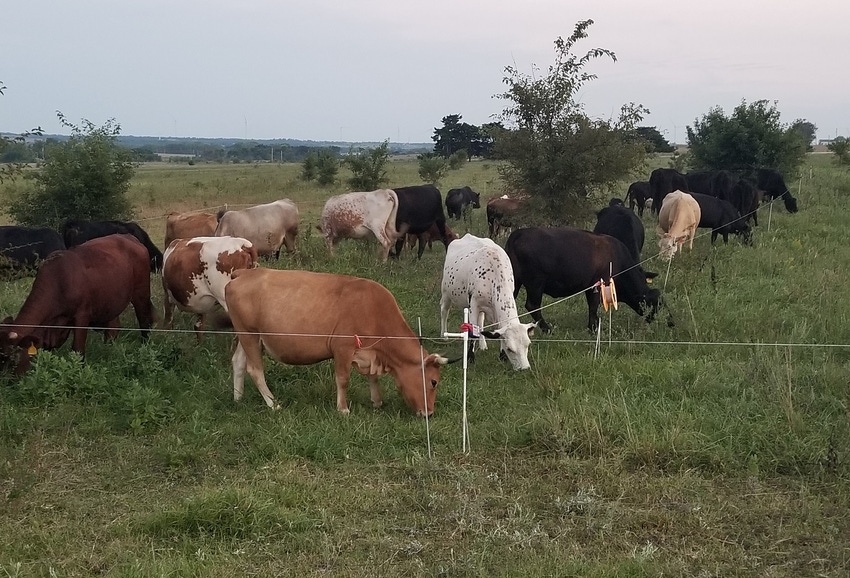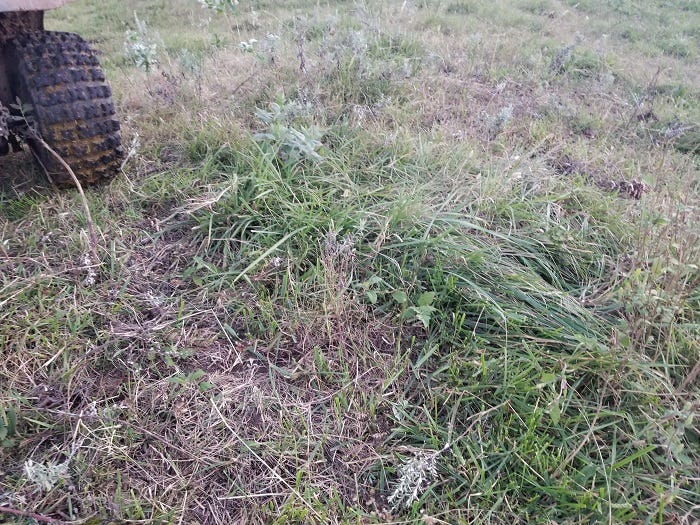
It’s possible to vary your grazing and forage age to match nutritional needs of the cow and still build soil health and productivity.
In my last blog about the genetics needed for non-selective, high-density grazing, I mentioned this concept. However, I probably need to offer a little background, especially for those who are new to managed grazing.
In the early years of managed grazing, one of the primary concepts was that you should graze all your forage while it is in stage 2 growth. This would be recovered to the point it is operating on photosynthesis and not root reserves, and vegetative but not reproductive. State 2 generally provides the best balance of energy and protein. However, it does not allow time for deep root development and therefore significant soil health improvements.
In more recent times, some graziers have moved toward longer recover times, taller forage and deeper root systems. Although this is the best soil builder, the lower plane of nutrition is a negative. Some graziers supplement more to make up for that. Some do more top-grazing and leave more plant material behind. The result of leaving more behind is the plants still tend to be more stemmy and less leafy, with wider plant spacing. The productivity gains are still good.
The concept of ultra-high-density grazing (UHDG) that I’ve been writing about is the next logical step in forage improvement because it does a better job of even harvest than anything but a mowing machine. The resulting sward of forage is much denser, much leafier, and more copious. It improves the land and forage quality and quantity faster than anything else we have done. Stocking rate shoots up dramatically. But forage quality for the cattle ultimately is low because we’re asking them to eat nearly the entire plant, yet the best material is essentially the top portions and leaf tips.
The solution
So here’s the solution, as described by UHDG pioneer Johann Zietsman and by Jamie “Jim” Elizondo of Florida, one of the earliest practitioners of this art.
You pick a portion of the ranch on which to practice stage 2 grazing during the growing season. This should be the time you calve and perhaps wean or early wean. This helps solve your quality problem and keep your cows in the best flesh. Then you move that stage 2 grazing to another area the next year so the area you abused in the current gets full recovery and is not grazed again until the next winter.
In practicing this method last year, I got behind in my grazing cycle last year, and then was trying to eat older, more mature forage. I should have skipped ahead with the herd to an area where the forage was medium stage 2 and then kept moving forward. I spent quite a bit of money on supplement and still never caught up. In addition, the season was very rainy and the spring was too cold and I lost too much body condition in that early timeframe.

A caveat
One thing I learned this year is my stock density will decline through the summer as I go through the stage 2 paddocks the second time because there is less tonnage. I’ve had to adjust the acreage allowed per paddock and per day upward, meaning I’ve had to supply more acreage for the herd on a daily basis. This is an adjustment that would have been easier if I was at the farm more hours per day, actually moving the cattle myself instead of depending on timed gate openers.
As this is happening, you need to be very diligent about making certain the cows get filled every day. One of my solutions has been to keep adding a little more than I want to in each paddock and leaving a little more ungrazed forage behind. Some of this occurs because I am allowing a little more selectivity. Some is because my stock density has dropped and I am getting refusal to eat because of fouling by dung and urine, or in some cases refusal because of remnant dung from the previous rotation. If I had good dung beetle activity, I suspect there would be less of that.
Zietsman counsels managers to maintain non-selective grazing at all times, and I understand his reasoning and intent. However, with the modern-type cattle that make up the majority of my herd, the excess forage out there, and the other conditions I’ve described, I’ve chosen to back off the intensity a little and be sure I’m getting performance as cheaply as possible.
Further, I believe it’s important to keep a protein supplement like protein tubs or a urea lick out all through the summer. They may not use it much, but if they need protein, they can get some.
For more information, read my first blog on this topic.
About the Author(s)
You May Also Like




